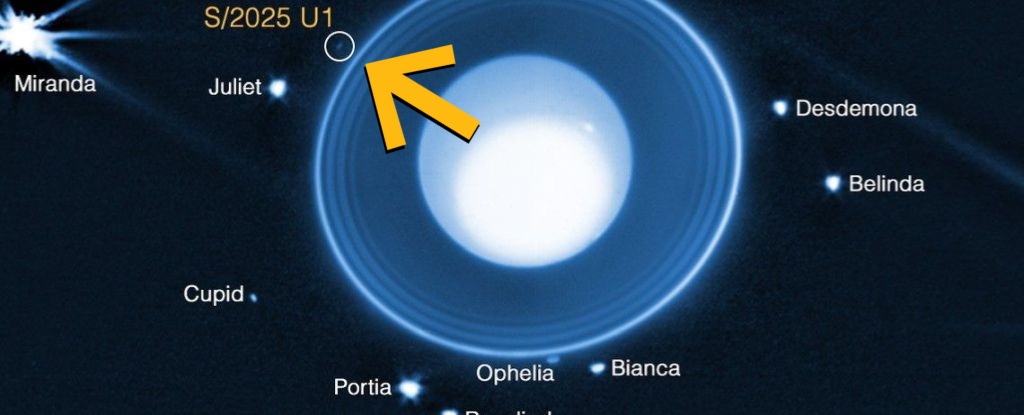
A significant astronomical discovery has expanded the known moons of Uranus to a total of 29. The James Webb Space Telescope (JWST) recently identified a small moon, designated S/2025 U1, in the vicinity of the icy planet. This tiny object, measuring approximately 10 kilometers (6 miles) in diameter, is the first of its kind to be detected in this area, eluding detection during the close flyby of Voyager 2 in 1986.
The moon was detected on February 2, 2025, when JWST spent over six hours observing Uranus and its surroundings. The discovery not only showcases the intricate nature of the Uranian system but also highlights the vast amount that remains unknown about it. According to planetary scientist Matthew Tiscareno from the SETI Institute, “No other planet has as many small inner moons as Uranus, and their complex inter-relationships with the rings hint at a chaotic history that blurs the boundary between a ring system and a system of moons.”
The new moon orbits at a distance of 56,250 kilometers from Uranus’s center, nestled among 13 other small moons that are situated inside the orbit of the larger moon Miranda. Its orbit is nearly circular, which suggests that S/2025 U1 formed in its current location. This moon is notably smaller and fainter than the previously identified inner moons, indicating the possibility of even more undiscovered moons in the region.
Implications for Future Research
The naming of S/2025 U1 remains pending, although moons of Uranus are typically named after characters from the works of William Shakespeare or Alexander Pope. As a result, the eventual name is expected to carry a poetic resonance.
Astronomer Maryame El Moutamid from the Southwest Research Institute expressed enthusiasm about the discovery: “Looking forward, the discovery of this moon underscores how modern astronomy continues to build upon the legacy of missions like Voyager 2, which flew past Uranus on January 24, 1986, and gave humanity its first close-up look at this mysterious world.”
The findings from JWST illustrate the ongoing evolution of astronomical knowledge, pushing beyond the frontiers established by previous missions. As technology advances, the potential for new discoveries in our solar system becomes increasingly promising.
The discovery of S/2025 U1 not only enriches our understanding of Uranus but also rekindles interest in further exploration of the planet and its moons. As scientists continue to analyze the data collected by JWST, anticipation builds regarding what additional secrets the Uranian system may reveal in the future.







